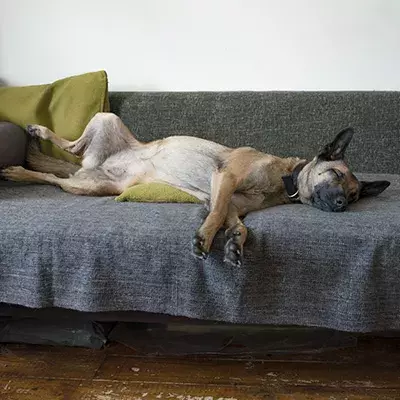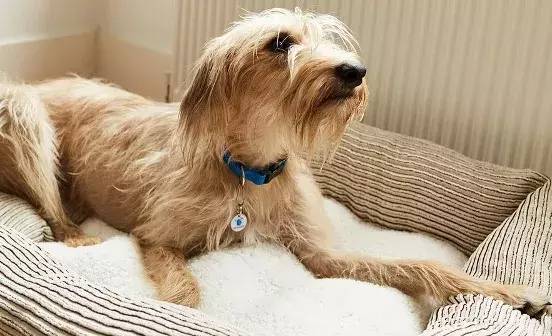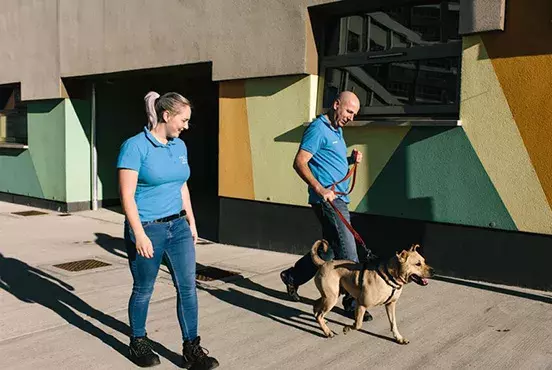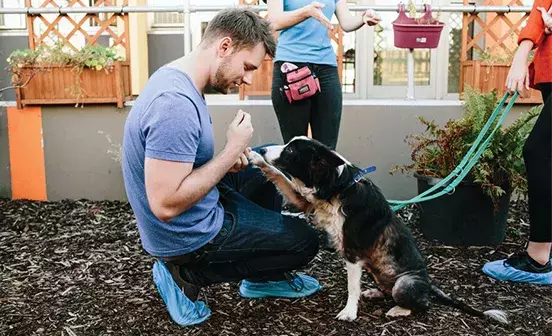Blind dogs may not be able to see, but that doesn’t affect their ability (or desire) to learn. Investing time in training your dog, whether they are short-sighted, visually impaired or blind will make for a stronger relationship and a happier and more fulfilled pet. Caring for a blind dog isn’t that different to caring for a sighted dog, but there are a few things you can do around the home to make sure they are as safe and comfortable as possible.
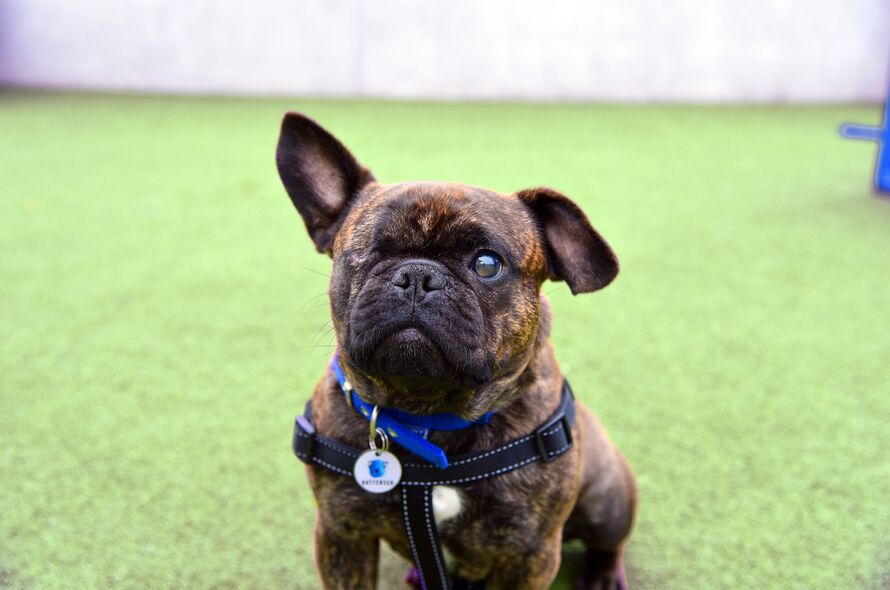
Training with your dog is also a constructive way to keep them active. With a blind dog, it’s even more important to teach them commands to help keep them safe. Commands let your dog know about obstacles and can help you to help them navigate the world around them.
Check out our video on caring for and training your blind dog, or take a look at the advice below.
SETTING UP YOUR HOME FOR A BLIND DOG
As with any dog, bringing a blind dog into your home requires some careful planning to ensure that they are comfortable, feel safe and secure and settle into the new home environment well.
1.MAKE SURE YOUR HOUSE IS DOG SAFE
Living life at a dog’s height can come with lots of hazards, especially when they can’t see them. Make sure any sharp edges and corners have protectors on them, and that anything they might bump into won’t cause any harm. Look out for anything your blind dog might accidentally fall from or into, like steps in and out of rooms, and it’s a good idea to use baby gates at the top of any stairs while they get used to where they are or learn to use them.
2. GIVE THEM A TOUR
Bear in mind that your home will be completely new to your dog and it may take a while for your new dog to learn the layout of the house and individual rooms. It’s a good idea to lead your dog through the house when they come home for the first time. This will give them chance to start familiarising themselves with the new surroundings and smells. You could also lay out a trail of food which your dog can follow to get them used to using their nose to navigate through the new home.
3. DON'T MOVE THEIR FOOD AND WATER
Consistency is very important for a blind dog. Once they have learned where things are, like their food and water, they will find them easier to return to on their own. Keeping things as familiar as possible will help them get to grips with the layout of their environment and learn their way around.
4. ADD SOME RECOGNISABLE FEATURES TO DIFFERENT ROOMS
Adding different distinctive items your dog might interact with, such as a textured rug, can help them to recognise which room they’re in as they move around the house. You can also use mats or carpet tiles as a different texture to indicate an obstacle, placing them in front of steps, items of furniture etc. Make use of your dog’s sense of smell to help detect obstacles by marking them with a scent.
5. CREATE A COMFY SPACE WHERE YOUR DOG CAN GO
Every animal needs their own space from time to time, but it’s especially easy for a blind dog to become overwhelmed. Create a safe, cosy space that your dog can call their own when they need some time out. A soft padded dog bed should work, and you could try adding familiar-smelling blankets to make it even more appealing.
TRAINING TIPS FOR YOUR BLIND DOG
1. KEEP IT SHORT AND POSITIVE
When training any dog, you should aim to make it fun and rewarding for both of you. The best way to do this is with praise and treats but remember to adjust their food intake to avoid overfeeding them. To begin with, keep sessions short and train in a familiar area without any distractions.
2. CONSIDER USING A CLICKER
Clickers, which are used to “mark” the behaviours we want to see can be particularly beneficial when working with blind dogs. The noise is quick, distinct, and consistent, all of which your blind dog will appreciate. Take a look at our advice on clicker training for more information.
Alternatively, you can choose to use sounds or words as commands, just make sure that everyone involved in your dog’s training uses the same one for each different command. Consistency is vital to avoid confusing your dog or making them frustrated.
3. TALK TO YOUR DOG
Without their vision, your dog’s other senses, like their hearing and sense of smell, are even more heightened. Talking to your blind dog will reassure them and help them understand where you are in relation to them. You should always talk to your dog before you touch them to let them know you’re there, and make sure you don’t scare or startle them.
4. USE SCENTS DURING PLAY TIME
Blind dogs need walks and play time just like any other dog, but they may need a bit of help finding and chasing things. Try rubbing strong-smelling food or treats on their toys before you throw them to help them sniff them out. Always play in a safe, open area and give your blind dog chance to explore the area with you first before you start.
COMMANDS TO TEACH YOUR BLIND DOG:
Commands are a useful way of letting your dog know that something is about to change, whether that be walking speed, direction or that another dog or a person is about to approach them. All commands should be completely distinct and sound different, since your dog will not have the benefit of visual cues to associate with them and help them understand what you’re asking or telling them.
To begin with, you will need to consciously make an effort to give the command every time you perform the action.
| 'WAIT' | Use this command to announce to your dog that you are about to stop walking. Say the word, stop and wait for your dog to stop too. Praise, reward and when you’re ready to carry on give the ‘walk on’ command. |
| 'WALK ON' | Before you resume walking, give the “walk on” and gently lead your dog, praising them as they moves on. |
| 'HUP' | Say ‘hup’ as you approach a step up or a kerb and step up before your dog does. |
| 'STEP' | Say ‘step’ as you approach a step down or kerb, step down before your dog does. |
| 'THIS WAY' | Use as you turn right. |
| 'THAT WAY' | Use as you turn left. |
| 'WHO'S THIS?' | Use to announce the arrival of a new person or dog, so that they are aware of their arrival and can sniff them to investigate |
If you’re struggling or feel like you could use some extra support, we would recommend getting in touch with a reputable trainer who can help with your situation and find what works best for you and your dog.
Download this guidance as a handy advice sheet and use it to train regularly:
